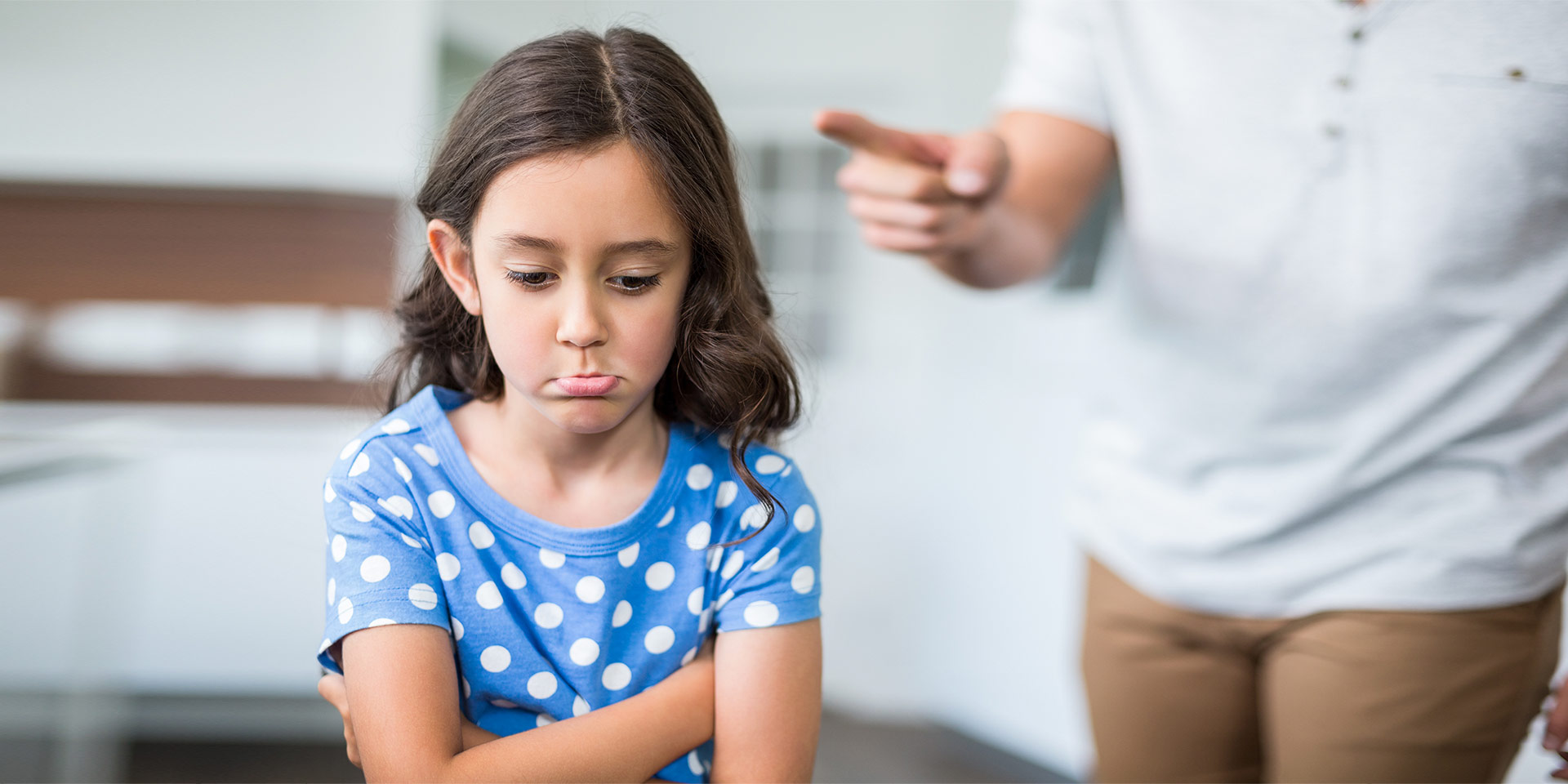One can hardly overestimate the role the relationship between a parent and their child plays in forming a matrix for the child’s future relationships, whether healthy or dysfunctional. The quality of the parent-child relationship is essential because it directly impacts the child’s social and emotional development, and its quality influences the child’s ability to deal with future conflict.
Conflicts are unavoidable, and they are ever-present in rather strained times, like coronavirus pandemic. Studies show that relationships that are based on a high level of conflict bring a ”considerable contribution to the socio-emotional dysfunctionalities among children of school age and adolescents”[1] and that ”the mental health of the child is affected”[2].
But issues can arise at earlier ages too, including for children in preschool. A study that examined conflicts that occur between parents and children aged 2 to 4 found out that, ”by improving the parent-child relationship[…] children’s adaptation problems can be solved, helping them reach better results in the long-run”[3].
As the longest and closest relationship one has, the parent-child relationship is also the most exposed to high rates of conflict, which are present even when children become adults and their parents, in their own right, become older. Conflict is part of a reality that both parents and children need to know how to manage constructively from early on.
Why have conflict?
Being a parent is a school for life. What you learned yesterday is not enough for today and much less so for tomorrow, because the parent-child relationship requires continuous adjustment to the developmental level of the child, the level of stress that the child is faced with daily, as well as the parent or to the way that each of them expresses their emotions and their needs.
In most cases, during pregnancy, the future parents imagine happy scenarios in which the children are smiling, they eat their vegetables gladly, they quickly learn how to obey, while they, the parents, rove around the little ones, playing with them. It only takes a few days after the birth of the child, for reality to kick in, showing its true colors. The children are crying, the parents are tired, the children want to go exploring, the parents set their limits, children have their own slower pace, and parents hurry them up.
The source of the conflict comes from the difference in the developmental needs of the two parties involved in the relationship. There are two large directions that manifest themselves in a conflict: (1) relational — when the two parties hold different perspectives about the relationship, and (2) individual — where everyone’s own need for independence and self-control takes over.[4]
The relational level. Parents are preoccupied with the physical and emotional safety of their children. They focus on this aspect throughout their lives, because this is how they primarily understand the responsibility of parenting and caring. Sometimes this is obvious (eg. when putting the seatbelt on their children, dressing them up appropriately for the weather outside, setting rules of all sorts, taking part in the child’s conflict with other children), sometimes it is less obvious (eg. when getting the child to do their homework, expecting high grades, questioning them about breaking curfew).
Children, on the other hand do not feel this need for safety (after a few years this also comes from the fact that they know their parents are responsible for it).
Children come into the world with a desire and instinct to explore and discover everything that surrounds them, the world, but also themselves. They test everything with their mouth, they take things out of drawers, roll over, throw the glass away, press the buttons, experiment things, try things out (tobacco, alcohol), even if they know they are not good for them. They just want to see what things taste like, and they test the limits that are imposed upon them to see what lies beyond them. “What happens if…?”
Developmental psychologist Dr Nancy S. Buck came to the conclusion that, “Every parent wants to hold their child close, to protect them and keep them safe. And every child wants to break free of their parents’ hold, going out into the world to discover, explore, and learn. Each is pulling the other in the opposite direction.”[5]
On an individual level, parent-child conflicts often come to light when parents do not give their children the attention they need, especially in their first years of life. Many times, children will wish for a playful evening with their father, but he is too tired. Or they want their mom to read them a story, but she is caught up with house chores. Even more difficult is the situation in which children want to sleep with their parents, while the parents are looking forward to some time of their own. Even if most of these moments come up during the evening and they can be subject to fatigue, these moments are also present during the day. The child will want to wear the dinosaurs pair of socks, which is nowhere to be found, while the mother is in a hurry and will give them a pair of socks with cars instead. The child will want to fly the kite now, while there is wind outside, while the father, who is sick with a cold, doesn’t want to go out.
What can be done?
The way in which parent-child conflicts are dealt with will become the primary model based on which the child will learn how to handle conflict in future relationships. This is why what needs to be done must be done well!
Judging by the model of bilateral preoccupation[6], there could be four answers for parents, depending on the focus: toward the self (the parent) or the other (the child).
- Giving in occurs when the attention of the parent is oriented exclusively towards the child, and the parent will do anything for them. Spoiling them, lacking in limits and discipline will lead to children thinking that the whole world revolves around them.
- At the opposite end, fighting occurs when the parent will not cede anything before the child. Attitudes such as ”I am right, this is how I want it to be!” and ”You’ll do as I say” will lead to children with a high level of inhibition or angry children who want to fight and contest authority.
- Avoidance takes place when the parent will not give in to the child, but they won’t fight to have their way either. Although it can sometimes be used as a strategy in small conflicts, a parent who is passive will convey indifference in his relationship to their child, and the child will perceive it as a message that he or she is insignificant.
- Solving the problem is the only solution that works. In this case, the interest is directed at both parties: “I want things to turn out your way, but I want them to turn out my way too!” The parent and the child are not set against each other, rather together they solve the problem that has come up.
There is plenty of advice for this last and desirable approach. What is odd is that there are plenty of classes and parenting books that make the life of parents harder and harder. Every specialist in the field looks at the issue from a single angle, from one specific viewpoint, providing techniques that may or may not work. Parents are very different beings, children are different too, and what is more, even in the same type of relationship one cannot use the same technique to solve different types of conflict, as contexts are dynamic.
What remains to be done?
In situations of conflict, the parent needs to understand what the source of the argument is (the difference in needs) and to be mindful of the fact that they are teaching their children life lessons. So parents must apply principles rather than techniques. Principles are general ideas which that find their specific applicability in different types of situations, according to the dynamics of the relationship, the needs of both the parent and the child, in accordance with the way of expressing themselves, of understanding etc. At the same time, some of these principles represent some of the steps a parent can take in order to bring the conflict to an intelligent resolution.
It is a parent’s duty to ensure that the child enjoys a safe environment, both physically and emotionally. This involves handling one’s own emotions. When conflict occurs, the parent must stop and ask themselves what’s bothering them? What is the make-up of the multitude of feelings they are experiencing on the inside? What is the chord that that particular situation strikes? What is the connection between the parent’s feelings and the child or what is the connection between the parent’s feelings and the situation they find themselves in? For example, if the parent is in a hurry in the morning and will become annoyed with the little one because they won’t put their clothes on faster, the parents would benefit from asking themselves the following questions: What can happen if I run late? Why am I afraid of running late? Why am I being late now? What should I be doing now to sort out the situation faster? What is more important now: for me to get to work on time (and that may be the case) or to be patient with my child?
Parents’ calmness gives children a feeling of safety in situations of conflict, and diminishes the chances that they become defensive. At the same time the child will learn how to control their own emotions if they see the parent doing the same thing, and their own behaviour is the only thing the parent can truly control.
The conflict that arises is not a war. Even if the definition of the parent-child conflict points out that both the parent as well as the child can manifest negative behaviours and feelings, in reality it is not a matter of one against the other. If that were the case, it would be obvious who would win, at least based on strength. Conflicts will not be settled based on strength and power. Besides, in order for it to be a real fight, it takes two sides to be involved, and if the parent becomes emotionally detached (Step 1), the child cannot fight by him/herself, even if their strong emotions are being expressed in an aggressive manner.
The behaviour is just a symptom, not the actual problem. This applies to parents as well. Every type of behaviour has a cause and a purpose. The child will scream because they don’t like the fact that they don’t get to decide whether to go to sleep or not. The parent will yell because they want to be listened to. The child will hide the broken plate because they don’t want to be punished. The parent will make the child finish everything on their plate for fear they will lose weight or become ill. And on and on.
After calming down and understanding that the situation isn’t a battle, the parent will have to prioritize their purpose of action. What will my child learn if I do this? What will I convey? The parent will take responsibility for solving the conflict, and their attention will be directed towards the need behind the child’s behaviour. What is the actual problem? What does my child want to convey? Maybe they are tired, hungry or irritated because of other things.
Children are faced with daily stress too. Even if their world may seem small, it is their world. School-aged kids will pressure themselves because teachers have their own expectations. Children can’t always decide what to do, even if they need self-control and independence. It’s noisy when they need silence, or the internet went down when they were talking to their friends etc. All these small things will use up their emotional space and internal resources. Most of the time, they will express this accumulation of strong feelings by being aggressive, disrespectful and by not cooperating.
Inadequate behaviour is usually just a call for help to teach the child how to handle their own emotions. The behaviour of acting out represents an unmet need for connection. The best part is that the child is willing to express their needs — but they will only do so when they feel safe. When a child shouts or throws things, what they are actually doing is expressing their needs, or their feeling of powerlessness toward the person they think is capable of helping them. Therefore it may be that a child does not want to go to kindergarten not because he’s wearing his car socks when he would rather have his dinosaur socks, but because a playmate is always taking his toys away. Not knowing how to deal with his discomfort in terms of cause and effect will lead the child to cling on to anything he deems blamable.
The child can only behave as a child. Children are not tiny adults, they are children. They need to understand how and why things happen the way they do in their lives. They need to know the external world, but also their internal world. They need to know their strength and their resources in order to use them responsibly. They need to know their limits in order to know up to which point they are safe. They need to be aware of their emotions and know how to deal with them properly. The prefrontal cortex is only developed fully at maturity, which means they cannot think straight when they are upset because their emotions take over.
In a conflict situation, it is the parent’s responsibility to listen to the child, to help them identify their emotions and to calm them down. This is why the parent needs to accept the child’s emotions and perspective, even if they don’t agree with how they express them. The child needs to feel love and accepted in any situation, and the solution to that is the parent-child connection, even if the rules already mentioned still apply. The child will hit their parent if the parent won’t play with them. The parent can help the child understand their frustration comes from a lack of control over the situation, but the parent will not allow the child to hit them: “I understand you want to play with me some more and that you would like me to not go away now, but you will not gain control over me by hitting me. It would be better if you came into my arms and told me how you are feeling!” This step of helping the child identify their emotions and talking about them is important because the emotions can grow bigger and transform themselves. If the frustration caused by the lack of control over the parent is not identified and dealt with, it can later turn into hate.
Lay the foundation during good times. Moments of rebellion, not listening, and conflict are an indication that the relationship is not strong enough for guidance at that point in time. The respect and empathy shown toward the child are basic principles. In situations of conflict, the child’s most important need is to know that he is loved and accepted. The child cannot separate themselves from their emotions, so any denial or lack of acceptance of their emotions becomes and lack of acceptance of themselves. Emotional safety is part of the solution.
When they are being sent to their room to calm down, the child will probably eventually do so, but they will feel as though they are being pushed aside, every time they don’t know how to handle their emotions. Even if they do calm down, the child will not be able to learn how to face these emotions by themselves and next time, they will hit even stronger. After a few episodes, the child will start looking at their parent as if they were the enemy (because they don’t feel accepted) instead of feeling like they are given unconditional love.
Only after they have calmed down and started feeling connected to their parents, can children start paying attention to advice and conversation. This may mean that the parent needs to apologize for their tone of voice or to leave the dishes for a while and build a tent out of blankets where they can read stories instead. In other words, the fire must first be put out and then the house can be rebuilt.
Sometimes the solution can be an imaginary one. Children live in their own world, imagining all the things they cannot do. Many things happen only in their imaginary world, and that is sufficient. When real solutions cannot be found, the parent can turn to the child’s imagination: “Now I must go into the office, but you can still play chess with me. Look, you can move my pieces too. I am curious who will win!”
All things old are new again
Although they may seem like “last generation” principles, promoted by well-known authors like D. Siegel or L. Markham, they have been around for a long time. Over a century ago, writer Ellen White offered parents (who were rather authoritarian, back in those days) surprising advice, which was largely unacceptable at the time: “Parents, whenever you feel irritated, watch twice as carefully over yourselves and make sure your lips only speak pleasant and joyful things. […] By exercising self-control, you will become stronger. […] Mistakes must be dealt with promptly, wisely, firmly and decisively. […] Whenever I saw something wrong, I waited until the situation passed, and after giving them the opportunity to reflect on it, I would deal with them. […] Parents need to start feeling like children and thinking like them in order to understand their wishes, […] The little ones must be cared for with great care when they are in trouble. […] mothers should talk to their little ones about their hopes and failures […] The more unloved they are, the more difficult it will be to show them that you love them. […] Children need to feel like they part of a family. […]What was missing was mom’s soothing embrace.”[7]
Perhaps society could have learned more about how to develop the parent-child relationship back then, but there is time from now on too to practice proper conflict resolution.
The bad news is that this kind of approach requires more effort from parents. And it will not always be solved with success because, even though they are adults, parents have their own limits too.
The good news is that such an approach works for both parties. Both parents and children will learn how to handle their emotions in times of crisis, reducing the situations of conflict and the time needed to resolve them.
The best piece of news is that this approach leads to both individual and relational change. Parents and children will stay connected, enjoying emotional safety even during times of crisis. Moreover, this approach is educational in the long run, offering the child not only an opportunity to learn but also a positive model for handling of conflicts within close relationships.
Simona Condrachi is an Education undergraduate at Montemorelos University in Mexico.



















